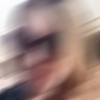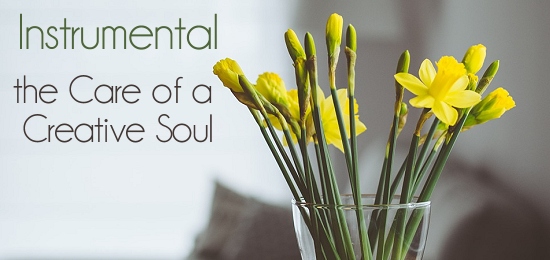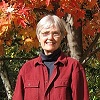
I asked a few of my author friends to answer a couple of questions about publishing. Hopefully their answers will enlighten those of you who are, or aspire to be, authors. I think you’ll see a trend.
The authors who participated include (Editor’s Note: Links go to each author’s website) :
- Kaye George aka Janet Cantrell,
- Jenn McKinlay,
- Krista Davis,
- Lucy Burdette aka Roberta Isleib,
- Hannah Dennison,
- Myself (Daryl Wood Gerber)
Why are pre-orders important?
Jenn: Probably, there is a very specific answer that I’m unaware of, but I think they’re important because publishers track your sales and all pre-orders get counted up the week that the book goes on sale. Big numbers mean your publisher will pay attention and your books will get better placement, bigger print runs, more publicity – basically you’ll stay employed!
Kaye: Because they are sales, and sales mean income. If you’re with a large publisher, they can help to push your visibility for them.
Lucy aka Roberta: Pre-orders demonstrate to the publisher that the book will have an audience, and that is a good thing, as they are more likely to get behind it with their own publicity.
Hannah: I like to say that pre-ordering your book is akin to the importance of sales taken at the box office for the opening weekend of a Hollywood movie. Pre-ordering a book creates buzz and hopefully shows the publisher that readers are eager to buy your book i.e. is the print run big enough for the demand? The other thing, too, is that if the publisher believes your new book is going to be popular, they will want more in the series.
Krista: Most authors dream of making bestseller lists, and pre-orders can give you the boost you need. Pre-orders count as sales during the release week when a book usually has the most sales. Add pre-sales and first week sales together, and that week is your best chance of selling enough books to make a bestseller list. In addition, pre-orders tell bookstores how a book might sell. If there are a lot of pre-orders, it signals an interest in the book to bookstores and book chains. They may even increase the number of books they order to accommodate the interest in the book. And when bookstores increase their orders, it can even kick your book into a second printing, which will make the author and the publisher very happy. It doesn’t stop there. If you have a lot of pre-orders and a second printing is necessary, your publisher will take note and it can have an impact on how your publisher treats your next book.
Some retailers will use a book to draw customers by lowering the price. I see this a lot with Walmart. Retailers have bots that search online prices so they can match or beat them. I’m only guessing, but if your book is getting a lot of pre-orders, it will be a more attractive book to discount, which means more sales.
Daryl: I can’t state it better than what my pals have stated. I believe pre-orders help bookstores know what is hot and what is not. They are all “sales” in the long-run, so they help those first week’s numbers, but the buzz in the industry comes from pre-sales.

Why are reviews important?
Kaye: Because many readers rely on reviews. This is more important if your books are not in bookstores since browsers can’t pick up the novel and leaf through it.
Lucy aka Roberta: Reviews help potential readers and librarians and bookstores decide to give the book a try!
Hannah: To be honest, I have mixed feelings about reviews. Five star reviews (especially on Amazon) do something exciting with the algorithms meaning that your book pops up as a must-read. Starred reviews in Kirkus, Publishers Weekly and Library Journal are highly coveted. But others … well … so much depends on the source.
Jenn: This I have to answer as a librarian. Bottom line: reviews tell readers whether they’ll like the book or not. Even a bad review will get me to buy. For example, if the reviewer hates something – quirky characters or a small town setting – that I love, their review will likely make me buy the book. Also, the more reviews a book gets, the more attention people will pay to it. Win-win.
Krista: I do a lot of shopping online (don’t we all?). And I put a lot of weight on reviews. This isn’t rocket science. If I’m interested in a dress and everyone has given it one star, I’m going to think there’s something wrong with the fit or the fabric. When I order cat food, I look for five-star reviews. Everyone knows how finicky cats are. If everyone’s cats like it, maybe my picky puss will, too. Of course, everything is subjective. I may love a book that someone else dislikes. I think it’s trickier to rely on reviews of books because tastes in books vary widely. Having said the obvious, I’ll now go into the rocket science part of the importance of reviews. Amazon sells more books than anyone. Their algorithms are not a mystery. There are plenty of articles about them and most mention that the number of reviews impact ranking. I’m told (and my experience seems to be consistent with this), that the more reviews a book has, the more advertising the book gets from Amazon. I assume the number of stars plays a role here.
Daryl: I think reviews help readers know what is good and what isn’t. I think some reviewers can be petty, but savvy readers can discern that. My big belief regarding reviews is that the publisher is excited to see what readers are saying about a book – it helps them get excited about a book, especially a new series. In addition, I agree with Krista, that the algorithm that works on many of the online sites, due to reviews, really drives up how that site will promote the book. You know those little suggestions that, for example, Amazon comes up with when you buy a book and you see “people who ordered this book might like this book” (and then you see a string of mini book covers)? I believe reviews drive those types of marketing tools.
What’s your next project?
Kaye: The Vintage Sweets cozy series set in Fredericksburg TX, from Lyrical Press, 2018
Jenn: Currently, I’m working on the 9th Library Lover’s Mystery, A FINE DAY FOR MURDER, coming Nov 2018! DEATH IN THE STACKS comes out this November. And my romance, BARKING UP THE WRONG TREE, is just out.
Krista: I have three projects in progress. For dog and cat lovers, NOT A CREATURE WAS PURRING will be released in November. COLOR ME MURDER, the first book in my new Pen & Ink Mystery series comes out in February. And you can color the cover! Finally, the Domestic Divas will be back in June with THE DIVA COOKS UP A STORM.
Lucy aka Roberta: Next project is the eighth book in the Key West Food Critic mystery series featuring Hayley Snow, 2018.
Hannah: I’m excited about a new series that is set in the Isles of Scilly off the Cornish mainland (Poldark fans will know where this is). I’m also thrilled that the Vicky Hill Mysteries (four books) will be re-released in the USA by Hatchette in 2018.
Daryl: Next up for me is the first in the French Bistro Mysteries, A Deadly Éclair, which debuts November 7. In 2018, I will have two new books coming out. The second in the French Bistro Mysteries, Soufflé of Suspicion (July) and the sixth in the Cookbook Nook Mysteries, Pressing the Issue (May).
Wishing you all good writing and great reviews!
About the Author: Daryl Wood Gerber
 Agatha Award-winning Daryl Wood Gerber writes the brand new French Bistro Mysteries as well as the nationally bestselling Cookbook Nook Mysteries. As Avery Aames, she pens the popular Cheese Shop Mysteries.
Agatha Award-winning Daryl Wood Gerber writes the brand new French Bistro Mysteries as well as the nationally bestselling Cookbook Nook Mysteries. As Avery Aames, she pens the popular Cheese Shop Mysteries.
A Deadly Êclair, the first French Bistro Mystery, comes out November 2017.
Daryl also writes stand-alone suspense: Day of Secrets and Girl on the Run. Fun tidbit: as an actress, Daryl appeared in “Murder, She Wrote.” She loves to cook, and she has a frisky Goldendoodle named Sparky who keeps her in line!
Connect with Daryl (and her alter ego Avery): Facebook | Instagram | Pinterest | Daryl on Twitter | Avery on Twitter





 Tabitha is a social media strategist, writer, blogger, and professional geek. Among her published works are the children’s books Jack the Kitten is Very Brave and Machu the Cat is Very Hungry, both published under the name Tabitha Grace Smith. A California girl (always and forever) she now lives in Maryland with her husband, son, and a collection of cats, dogs, and chickens. Find out more about her on her
Tabitha is a social media strategist, writer, blogger, and professional geek. Among her published works are the children’s books Jack the Kitten is Very Brave and Machu the Cat is Very Hungry, both published under the name Tabitha Grace Smith. A California girl (always and forever) she now lives in Maryland with her husband, son, and a collection of cats, dogs, and chickens. Find out more about her on her 






 Bella Cirovic is a photographer and writer who lives with her husband and daughter in the suburbs outside of NYC. She writes on the subjects of self care, body love and nourishment, crystals, essential oils, and family life. Catch up with Bella at her blog:
Bella Cirovic is a photographer and writer who lives with her husband and daughter in the suburbs outside of NYC. She writes on the subjects of self care, body love and nourishment, crystals, essential oils, and family life. Catch up with Bella at her blog: 











 Winner of the 2015 New Mexico-Arizona Book Award, Doll God,
Winner of the 2015 New Mexico-Arizona Book Award, Doll God, 




 Pat Phillips West lives in Olympia, WA. A Pushcart and Best of the Net nominee, her work has appeared in Haunted Waters Press, Persimmon Tree, VoiceCatcher, San Pedro River Review, Slipstream, Gold Man Review and elsewhere.
Pat Phillips West lives in Olympia, WA. A Pushcart and Best of the Net nominee, her work has appeared in Haunted Waters Press, Persimmon Tree, VoiceCatcher, San Pedro River Review, Slipstream, Gold Man Review and elsewhere.





 serves, to see old patterns dissolve while new ones take shape. Transcending both the old and the new by being in the present moment, in the breath, is the challenge of the morning. Every morning.
serves, to see old patterns dissolve while new ones take shape. Transcending both the old and the new by being in the present moment, in the breath, is the challenge of the morning. Every morning. I didn’t become a morning person. On day 41 I slept in.
I didn’t become a morning person. On day 41 I slept in. Dona Murphy is the owner of
Dona Murphy is the owner of 
 Patricia Wellingham-Jones is a widely published former psychology researcher and writer/editor. She has a special interest in healing writing, with poems recently in The Widow’s Handbook (Kent State University Press). Chapbooks include Don’t Turn Away: poems about breast cancer, End-Cycle: poems about caregiving, Apple Blossoms at Eye Level, Voices on the Land and Hormone Stew.
Patricia Wellingham-Jones is a widely published former psychology researcher and writer/editor. She has a special interest in healing writing, with poems recently in The Widow’s Handbook (Kent State University Press). Chapbooks include Don’t Turn Away: poems about breast cancer, End-Cycle: poems about caregiving, Apple Blossoms at Eye Level, Voices on the Land and Hormone Stew.